A single slit with the direction to a point P on a distant screen as shown in the following figure. At P, the pattern has its second minimum (from its central maximum). If X and Y are the edge of the slit, what is the path length difference (PX) - (PY)?
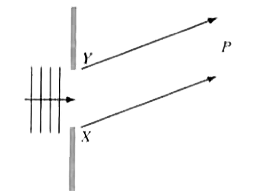
The correct Answer is:D
Step by step video, text & image solution for A single slit with the direction to a point P on a distant screen as shown in the following figure. At P, the pattern has its second minimum (from its central maximum). If X and Y are the edge of the slit, what is the path length difference (PX) - (PY)? by Physics experts to help you in doubts & scoring excellent marks in Class 12 exams.
Topper's Solved these Questions
- BOOK - RESNICK AND HALLIDAYCHAPTER - INTERFERENCE AND DIFFRACTION EXERCISE - PRACTICE QUESTIONS (More than One Correct Choice Type)23videos
INTERFERENCE AND DIFFRACTION
- BOOK - RESNICK AND HALLIDAYCHAPTER - INTERFERENCE AND DIFFRACTION EXERCISE - PRACTICE QUESTIONS (Linked Comprehension)21videos
INTERFERENCE AND DIFFRACTION
- BOOK - RESNICK AND HALLIDAYCHAPTER - INTERFERENCE AND DIFFRACTION EXERCISE - PROBLEMS61videos
INTERFERENCE AND DIFFRACTION
- BOOK - RESNICK AND HALLIDAYCHAPTER - HYDROGEN ATOMEXERCISE - PRACTICE QUESTIONS(Integer Type)6videos
HYDROGEN ATOM
- BOOK - RESNICK AND HALLIDAYCHAPTER - MAGNETIC FIELDS DUE TO CURRENTSEXERCISE - Practice Question (Integer Type)4videos
MAGNETIC FIELDS DUE TO CURRENTS
Similar Questions
A 0.20 mm wide slit is illuminated by light of wave- length 420 nm. Consider a point P on a viewing screen on which the diffraction pattern of the slit is viewed, the point is at 30∘ from the central axis of the slit. What is thc phase difference between the Huygens wavelets arriving at point P from the top and midpoint of the slit?
View SolutionThe diffraction pattern of a single slit is shown in the figure. The point at which the path difference of the extreme rays is two times the wavelength is
 View Solution
View Solution
Knowledge Check
- Question 1 - Select One
Light shining through two very narrow slits produces an interference maximum at point P when the entire apparatus is in air as shown in the following figure. For the interference maximum represented, light through the bottom slit travels one wavelength further than light through the top slit before reaching point P. If the entire apparatus is immersed in water, the angle θ to the interference maximum
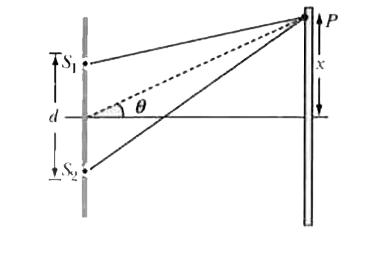 AIs unchangedBDecreascs bccausc the frequency decreasesCDecreases because the wavelength decreasesDIncreases because the frequency increases
AIs unchangedBDecreascs bccausc the frequency decreasesCDecreases because the wavelength decreasesDIncreases because the frequency increases - Question 2 - Select One
In a modified Young's double-slit experiment, source S is kept in front of slit S1 as shown in the following figure. Find the phase difference at a point that is equidistant from slits S1 and S2 and point P that is in front of slit S1 in the following situations:
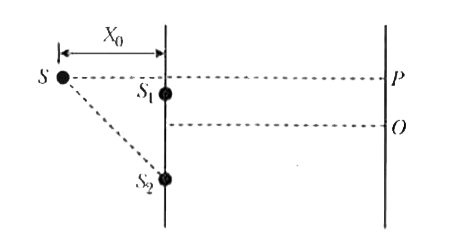
If a liquid of refractive index n is filled between the screen and slits, what is the phase difference?A2πλ[[√d2+x20+x0]+nd22D]B2πλ[[√d2+x20−x0]+nd22D]C2πλ[[√d2−x20+x0]+nd22D]D2πλ[[√d2−x20−x0]+nd22D] - Question 3 - Select One
In a modified Young's double-slit experiment, source S is kept in front of slit S1 as shown in the following figure. Find the phase difference at a point that is equidistant from slits S1 and S2 and point P that is in front of slit S1 in the following situations:

If a liquid is filled between the slit and the source S, what is the phase difference?A2πλ[n√d2+x20−x0−d22D]B2πλ[n√d2+x20−x0+d22D]C2πλ[n√d2+x20+x0+d22D]D2πλ[n√d2−x20−x0−d22D]
The figure represents two identical slits in a Young’s double slit experiment. The width of each slit is b and distance between the centres of the two slits is d. Consider a point P on the screen that is close to centre of the screen. Δxt represents the optical path difference to point P from the top edges of the two slits and Δxb represents the optical path difference to P from the bottom edges of the two slits. FindΔxb–Δxt.
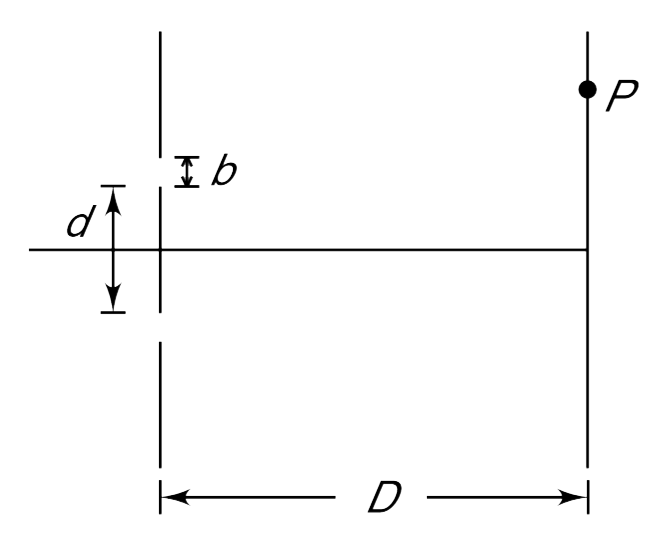
It is given that D>>d.View Solution(a) Derive the relation asinθ=λ for the first minimum of the diffraction pattern produced due to a single-slit of width 'a' using light of wavelength λ.
(b) State with reason, how the linear width of central maximum will be affected if (i) monochromatic yellow light is replaced with red light, and (ii) distance between the slit and the screen is increased.
(c) using the monochromatic light of same wavelength in the experimental set-up of the diffraction pattern as well as in the interference pattern where the slit separation is 1mm, 10 interference fringes are found to be within the central maximum of the diffraction pattern. determine the width of the single-slit, if the screen is kept at the same distance from the slit in the two cases.View Solution(a) Derive the relation a sinθ=λ for the first minimum of the diffraction pattern produced due to a single slit of width ‘a’ using light of wavelengthλ.
(b) State with reason, how the linear width of central maximum will be affected if
(i) monochromatic yellow light is replaced with red light, and
(ii) distance between the slit and the screen is increased.
(c) Using the monochromatic light of same wavelength in the experimental set-up of the diffraction pattern as well as in the interference pattern where the slit separation is 1 mm, 10 interference fringes are found to be within the central maximum of the diffraction pattern. Determine the width of the single slit, if the screen is kept at the same distance from the slit in the two cases.View SolutionWhite coherent light (400nm−700nm) is sent through the slits of a Young's double slit experiment (as shown in the figure). The separation between the slits is 1mm and the screen is 100cm away from the slits. There is a hole in the screen at a point 1.5mm away (along the width of the fringes) from the central line. (a) For which wavelength (s) there will be minima at that point ? (b) which wavelength (s) will have a maximum intensity?
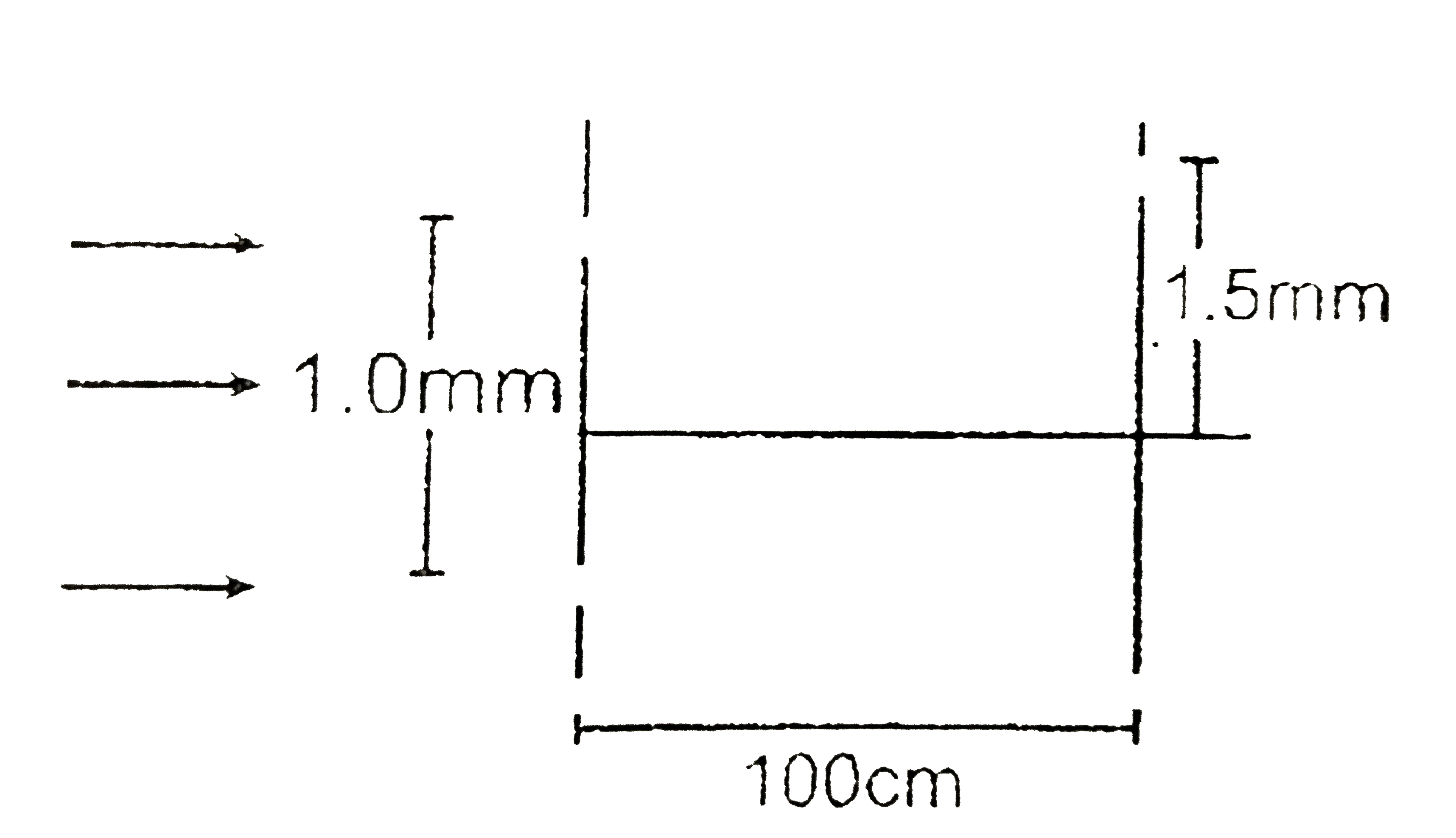 View Solution
View SolutionAn electric dipole is placed along x–axis at the origin as shown in the figure. Electric field at the point P is parallel to the y–axis. If x–coordinate of P √2 is m, what is its y–coordinate?
View Solution

